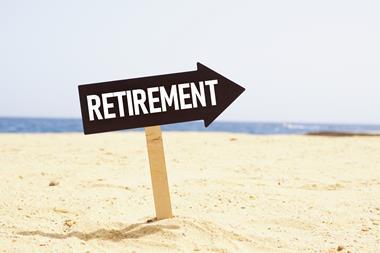Will the Ogden Rate have a positive or negative effect on premiums, the industry debates both possibilities
Yesterday the Lord Chancellor, David Gauke announced an increase to the personal injury discount rate from the current minus 0.75% to 0.25% effective from 5 August onwards.
It affects the amount paid by insurers for pay-outs for people with long-term severe injuries - the lower the Ogden discount rate, the higher the compensation due to policyholders.
It follows the government’s original revision to the Ogden Rate in 2017, when the rate went from 2.5% to minus 0.75%, which had a knock-on effect of significant premium increases.
But what effect might the latest revision have on premiums? The announcement has divided opinions in the insurance industry, with some thinking premiums will increase and others anticipating a drop.
James Rakow, insurance partner at Deloitte, said that yesterday’s announcement marks another “significant chapter” in the decades-long legal story on how the discount rate for personal injury claims should be set.
Dips in motor premiums
“Consumers might expect to see decreases in their motor insurance premiums as a result of the new rate. Today’s announcement marks the end of the recent uncertainty surrounding the discount rate and sets the tone for future reviews, Rakow said.
“In light of the requirement for the Lord Chancellor to consider a low risk investment portfolio and the impact of investment management costs and tax, remaining in negative territory was always on the cards and should not have come as too much of a surprise.”
David Powell, head of non-marine underwriting at Lloyd’s Market Association, said that the Lloyd’s market is “very disappointed” with the decision.
He said while the change is positive for compensators, “the highly competitive nature of our industry means that reductions in costs will quickly influence premiums”.
But with a change this small he said it was unlikely to lead to substantial price reductions for policyholders.
Hikes in motor premiums
Mohammad Khan, general insurance Leader and partner at PwC, said the announcement and it means that motor insurance premiums - which have been broadly stable this year and slightly lower than last year - will probably increase.
“The average motor insurance premium will probably increase by between £15 and £25 but younger drivers may see their premiums increase by about £50 to £75. In real terms, this means that UK motorists have been paying lower insurance premiums compared to what the industry could have charged them if they assumed the Ogden discount rate was -0.75%,” he said.
“Ever since the announcement from Government to review the discount rate back in September 2017, the insurance industry expected the Ogden discount rate to increase from -0.75% and has consequently been pricing motor insurance and settling insurance claims at a rate higher than -0.75% - typically between 0% and 1%.
“The Ogden discount rate affects the amount paid by insurers for pay-outs for people with long-term severe injuries - the lower the Ogden discount rate, the higher the compensation due to policyholders.”
Penny Searles, chief executive at SmartDriverClub, added: “I think this is a missed opportunity. It is below what people are realising for investments and below where insurers have been reserving on the basis of the higher rate that the government said it would likely set between 0% and 1%. This is not great for consumers; we will see a rise in premiums.” She explained that the effect won’t be immediate, but all brokers have capacity from MGAs or insurers, they will all be hit unless insurers already anticipated this.
But Simon McGinn, general manager, commercial and personal at Allianz, added: “We believe providing seriously injured people with a fair level of compensation is the right thing to do, but the insurance industry is currently overcompensating. While today’s announcement has signified a move in the right direction, unfortunately the new rate of -0.25% does not go far enough. An opportunity has been missed to further tackle the increased cost of settling personal injury claims, which ultimately contributes to rising customer premiums.”
This falls short of motor insurers’ expectations of a rate between 0% -1% and is credit-negative said Helena Kingsley-Tomkins an AVP-analyst at Moody’s Investors Service.
“The less-than-expected increase will pressure earnings unless the sector can increase prices sufficiently to offset the future claims impact. The impact will vary by insurers, but those currently using discount rates above -0.25%, including Direct Line and Admiral, will face a one-off hit to earnings as they re-estimate up prior year claims reserves,” she said.
Hugely disappointed
Charles Ashmore, head of catastrophic injury at DWF, said that the decision will be seen as “hugely disappointing” by insurers.
“A dual rate was apparently considered but ruled out at this stage due to insufficient evidence, though it has not been ruled out in future and there will be further consultation,” he explained.
“The indications are that the next review will take place “within 5 years” so for the immediately foreseeable future all parties have certainty, even if they do not currently have the multipliers available – new versions of the Ogden tables will no doubt be available shortly.”
But Ashmore said that it isn’t a complete surprise considering the developments in Scotland with the passage of the Damages Act 2019 where the predicted rate has been in the region of 0.25%.
He added that “it will be considered to be at the very lowest end of expectations and at a level which many believe will still result in overcompensation to claimants”.
How could telematics help?
Mike Brockman, chief executive of ThingCo said that insurers need to shift their mindsets when looking at risk and embrace the technology available to help reduce these claims and educate drivers to become safer on the roads.
“Large motor insurance claims continue to be very costly for the industry and we know that the young driver market plays a significant role in incidences of larger claims and therefore higher premiums. Utilising the technology to reduce the risk of serious accident and get emergency services to accidents quickly has never been more important and we know the technology is there to do this.
What does the future hold?
Nigel Pocklington, chief commercial officer at MoneySuperMarket, said: “While today’s announcement from the Ministry of Justice has delivered a slightly lower rise than anticipated, making it potentially good news for personal injury victims who can expect to receive larger lump sum payments, it remains to be seen what the future holds for consumers in terms of the price of their car insurance.
“Insurers will want to take time to digest the implications and decide how to react. It could also prove a long road, as the industry is likely to challenge the Government’s decision.
“In the meantime, the good news for consumers is there could still be competitive deals to be had as prices fluctuate. That means it’s more crucial than ever to shop around when your premium is up for renewal, with upwards of £200 in annual savings up for grabs.”
Mark Holt, managing director of personal injury settlement specialists Frenkel Topping, warned that the new rate means that the industry could see many cases go back to court, and for recent large settlements, these might not get approved because the sum agreed will not reflect the new rate.
Therefore the new rate brings new “certainty” with claimants set to benefit, Holt added: ”There can be no hard and fast rules in the world of personal injury claims, especially in the extreme injuries we work with. Every single individual – which usually extends to the whole family who are of course also greatly affected – is different and each case has its own specific set of circumstances that need careful consideration.
”To me, the fairest solution will balance out the settlement over its duration. This will achieve a fair claim for the injured individual and their family, better transparency for insurers and, generally, will reduce the tendency towards increased insurance premiums across the board.”
Implication
Canaccord said it sees the”greatest impact” from Ogden on Direct Line, followed by Hastings and a small impact on Sabre and Hiscox
However it is still waiting for the FCA and CMA interim reports for guidance on dual pricing, plus it remains concerned that implementation of the whiplash reforms will again be delayed. It have become more cautious on timing for the rating upturn in motor and hence the profit before tax benefit, if we are wrong there is potential for a faster uplift to earnings.
Aioi Nissay Dowa Europe, which owns telematics provider Insurthebox, said that younger drivers would be disproportionately affected.
“The inevitability of this latest decision is that insurance premiums will go up. And the youngest, highest risk drivers will continue to carry the biggest burden which is somewhat contrary to so many other Government initiatives designed to improve social mobility for all, and especially the young generations coming into the working world.”
Hosted by comedian and actor Tom Allen, 34 Gold, 23 Silver and 22 Bronze awards were handed out across an amazing 34 categories recognising brilliance and innovation right across the breadth of UK general insurance.























































No comments yet